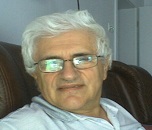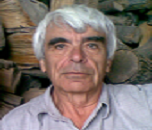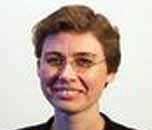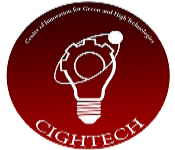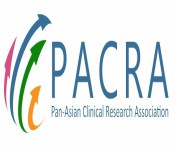Theme: Evolution of Interdisciplinarity in Physics Research
Applied Physics 2019
Conference Series llc LTD cordially invites the participants from all over the world to present and exchange knowledge at the renowned authentic “6th International Conference on Theoretical and Applied Physics” which is scheduled during May 16-17, 2019 Rome, Italy.
This event provides a combined research platform for both Theoretical and Applied Physics, based on the theme: Evolution of Interdisciplinarity in Physics Research, which includes potent Keynote presentations, Oral talks, Poster presentations, and Exhibitions from the eminent professionals in the field of Physics and its disciplines.
IMPORTANCE and SCOPE
The main objective of Theoretical and Applied Physics 2019 conference which is going to be an elite event is to bring together the main aspects of Theory and Applications of Physics such as
• Theory of Relativity
• Quantum Field Theory
• Unconventional Superconductivity
• Many-Body Systems
• Lasers & Optics
• Semiconductor Devices
• Graphene and its Applications
• Spintronics
• Nanophotonics & Nanodevices
Physics is one of the most seasoned disciplines and may be the most established through its consideration of Astronomy. Physics intersects with numerous interdisciplinary territories of research such as Astrophysics, Biophysics, Computational Physics, Quantum Chemistry, and others. New thoughts in Physics frequently clarify the essential components of other sciences while opening new avenues of research.
WHY TO ATTEND?
Latest advancements in the applications of Physics play a very vital role part in the basic existences of individuals and making their way of life in the front line. The meeting arrangement plans to disperse the progressions of research in Theoretical and Applied Physics to the worldwide group by making a stage for dynamic investment, trade of skill and horizontal intuition from specialists, researchers, and instructors.
This is the best opportunity for you to learn and explore the fascinating connection between theoretical and practical concepts of Physics.
TARGET AUDIENCE
• Professors and Technical staff from Physics and other related disciplines
• Researchers
• Scientists
• Lecturers and Students
• Research Institutes
• Managers and Business Intelligence Experts
• Delegates from Physical Science Societies and Associations
• Advertising and Promotion Agency Executives
Major Physics Associations around the Globe
• International Union of Pure and Applied Physics
• International Astronomical Union
• The International Society for Optics and Photonics
• International Union of Crystallography
• Society of Non-Linear and Dynamics Econometrics
• The International Association of Mathematical Physics(IAMP)
• The International Society for Optics and Photonics(IUPAB)
Conference Series llc LTD invites all the participants across the globe to attend the "6th International conference on Theoretical and Applied Physics" that is to be held between May 16-17, 2019 Rome, Italy.
Physics is the theoretical and experimental study of matter and energy and their interactions, extending from the area of elementary particles, through atomic and nuclear physics, to the physics of solids and ultimately to the origins of the universe itself. Theoretical Physics encompasses particle physics, cosmology, space physics and material and computational physics. The studies provide the researchers with a deep understanding of physical processes, theories and versatile skills in mathematical and numerical methods. Applied Physics is physics, which is intended for a particular technological or practical use. It is usually considered as a bridge or a connection between physics and engineering. Applied Physics is entrenched in the fundamental truths and concepts of the physical sciences. It is also concerned with the utilization of scientific principles in practical devices and frameworks, and in the application of Physics in other disciplines of science.
Track 1: Theoretical, Experimental and Computational Physics
Theoretical physics is the division of physics that employs mathematical models and abstractions of physical objects and systems to justify, explain and predict natural phenomena. It is an effort to understand the laws governing the nature. Experimental physics recovers all the disciplines of physics that are concerned with data acquisition, data–acquisition methods, and the detailed conceptualization and realization of laboratory experiments. Computational physics is the study of scientific problems by using computational methods; it is the computer science, physics and applied mathematics to develop scientific solutions to difficult problems. Computational physics pairs the areas of theory and experimentation in traditional scientific research.
Recommended Conferences:
Physics Conferences | Physics Conferences 2019 | Theoretical Physics Conferences | Physics Conferences 2019 USA | Physics Conferences 2019 Europe | Physics Conferences 2019 Asia
6th International Conference on Theoretical and Applied Physics 2019, May 16-17, Berlin, Germany. 3rd International Astronomy & Space Science Conferences 2019, May 02-03, London, UK. 5th International Conference on Condensed Matter and Material Sciences 2019, Aug 01-02, Dublin, Ireland. 11th International Euro Optics Conferences, 2019 Jun 17-18, London, UK.
Related Societies:
Europe:
Austrian Physical Society | European Physical Society | Fellows of the Australian Institute of Physics | Optical Society | Photonics Society of Poland | Physical Society of London | Swiss Physical Society | Estonian Physical Society | Italian Physical Society | International Association of Mathematical Physics | International Society on General Relativity and Gravitation | Italian Society for General Relativity and Gravitation | Society of Physicists of Macedonia | Society of Physics Students
USA:
American Physical Society | Optical Society | American Crystallographic Association | American Physical Society | Brazilian Physical Society | Canadian Association of Physicists | Mathematical Association of America
Asia Pacific:
Institute of Physics | Japan Society of Applied Physics | Nepal Physical Society | Physics Society of Iran | Australian Institute of Physics | Chinese Physical Society Community of Physics | Indian Physical Society
Track 2: Condensed Matter Physics
Condensed matter physics is a lively, dynamic field of research and it is the largest sub-turf of modern physics. It studies the macroscopic and microscopic properties of matter and how matter arises from a large number of collaborating atoms and electrons. Condensed matter physics is often motivated by the search for new materials with astonishing properties. The condensed matter is considered one of the largest and most versatile branches of study in physics, primarily due to the diversity of topics and phenomena that are available to study.
Recommended Conferences:
Physics Conferences | Physics Conferences 2019 | Theoretical Physics Conferences | Physics Conferences 2019 USA | Physics Conferences 2019 Europe | Physics Conferences 2019 Asia
Related Societies:
Europe:
Austrian Physical Society | European Physical Society | Fellows of the Australian Institute of Physics | Optical Society | Photonics Society of Poland | Physical Society of London | Swiss Physical Society | Estonian Physical Society | Italian Physical Society | International Association of Mathematical Physics | International Society on General Relativity and Gravitation | Italian Society for General Relativity and Gravitation | Society of Physicists of Macedonia | Society of Physics Students
USA:
American Physical Society | Optical Society | American Crystallographic Association | American Physical Society | Brazilian Physical Society | Canadian Association of Physicists | Mathematical Association of America
Asia Pacific:
Institute of Physics | Japan Society of Applied Physics | Nepal Physical Society | Physics Society of Iran | Australian Institute of Physics | Chinese Physical Society Community of Physics | Indian Physical Society
Track 3: High Energy Nuclear Physics
High energy nuclear physics studies about the behavior of nuclear matter in energy regimes. The most primary focus of this field is the study of heavy ion collisions and as compared to the lower atomic mass of atoms in other particle accelerators. At the very sufficient collision energies there are many of these types of collisions which are mainly theorized to produce the quark -gluon plasma. Traditional nuclear physics has been only devoted to study about the nuclei which are gently carried out. Using the high energy beams of heavy nuclei ions we can create states of nuclear matter that are very far removed from the ground state.
Recommended Conferences:
Physics Conferences | Physics Conferences 2019 | Theoretical Physics Conferences | Physics Conferences 2019 USA | Physics Conferences 2019 Europe | Physics Conferences 2019 Asia
Related Societies:
Europe:
Austrian Physical Society | European Physical Society | Fellows of the Australian Institute of Physics | Optical Society | Photonics Society of Poland | Physical Society of London | Swiss Physical Society | Estonian Physical Society | Italian Physical Society | International Association of Mathematical Physics | International Society on General Relativity and Gravitation | Italian Society for General Relativity and Gravitation | Society of Physicists of Macedonia | Society of Physics Students
USA:
American Physical Society | Optical Society | American Crystallographic Association | American Physical Society | Brazilian Physical Society | Canadian Association of Physicists | Mathematical Association of America
Asia Pacific:
Institute of Physics | Japan Society of Applied Physics | Nepal Physical Society | Physics Society of Iran | Australian Institute of Physics | Chinese Physical Society Community of Physics | Indian Physical Society
Track 4: Astro-Particle Physics and Cosmology
Astrophysics only deals with the cosmic rays from the space. With the measurement of these particles allows us to study the elementary particle physics and also the fundamental issues of cosmology. There are such examples for astro-particle physics such as dark matter and antimatter which probe the measurement of neutrinos from outer space and the highest-energy cosmic rays. In recent years the evolution of the universe has taken remarkable strides. While in case of the gravitational force which is only known to provide a very accurate description of the formation of large scale structure like galaxy clusters and at various interplay with the particle physics which has been crucial. With our knowledge the Cosmic Microwave Background Radiation combined with the other data such as the apparent acceleration of distant supernovae which suggests that the universe is well described by an early period of inflation.
Recommended Conferences:
Physics Conferences | Physics Conferences 2019 | Theoretical Physics Conferences | Physics Conferences 2019 USA | Physics Conferences 2019 Europe | Physics Conferences 2019 Asia
Related Societies:
Europe:
Austrian Physical Society | European Physical Society | Fellows of the Australian Institute of Physics | Optical Society | Photonics Society of Poland | Physical Society of London | Swiss Physical Society | Estonian Physical Society | Italian Physical Society | International Association of Mathematical Physics | International Society on General Relativity and Gravitation | Italian Society for General Relativity and Gravitation | Society of Physicists of Macedonia | Society of Physics Students
USA:
American Physical Society | Optical Society | American Crystallographic Association | American Physical Society | Brazilian Physical Society | Canadian Association of Physicists | Mathematical Association of America
Asia Pacific:
Institute of Physics | Japan Society of Applied Physics | Nepal Physical Society | Physics Society of Iran | Australian Institute of Physics | Chinese Physical Society Community of Physics | Indian Physical Society
Track 5: Material Science & Engineering
The interdisciplinary field of materials science which is commonly termed materials science and engineering and it involves in the discovery and design of new materials with an importance on solids. The knowledgeable origins of materials science stem was only clarified when researchers began to use analytical thinking from chemistry, physics and engineering to understand the ancient, phenomenological observations in metallurgy as well as mineralogy. Materials science is a syncretic discipline ceramics, hybridizing metallurgy, solid-state physics and chemistry. It is the first example of a new academic discipline evolving by fusion rather than fission.
Recommended Conferences:
Physics Conferences | Physics Conferences 2019 | Theoretical Physics Conferences | Physics Conferences 2019 USA | Physics Conferences 2019 Europe | Physics Conferences 2019 Asia
Related Societies:
Europe:
Austrian Physical Society | European Physical Society | Fellows of the Australian Institute of Physics | Optical Society | Photonics Society of Poland | Physical Society of London | Swiss Physical Society | Estonian Physical Society | Italian Physical Society | International Association of Mathematical Physics | International Society on General Relativity and Gravitation | Italian Society for General Relativity and Gravitation | Society of Physicists of Macedonia | Society of Physics Students
USA:
American Physical Society | Optical Society | American Crystallographic Association | American Physical Society | Brazilian Physical Society | Canadian Association of Physicists | Mathematical Association of America
Asia Pacific:
Institute of Physics | Japan Society of Applied Physics | Nepal Physical Society | Physics Society of Iran | Australian Institute of Physics | Chinese Physical Society Community of Physics | Indian Physical Society
Track 6: Plasma Physics
Plasma is created by heating a gas or exposing it to a strong electromagnetic field which is generally applied with a laser or microwave generator. This decreases the number of electrons which creates positive or negative charged particles known as ions, which is escorted by the dissociation of molecular bonds. Plasma is the most abundant form of normal matter present in the Universe of the forms which is confirmed to exist and the most abundant dark matter is hypothetical and which may or may not be clarified by normal matter and the most of which is in the rarefied intergalactic regions particularly the intra cluster medium and in stars along with the Sun. A normal form of plasma on the Earth is produced in neon signs. Most of the understanding of plasma has come from the search of controlled nuclear fusion and fusion power.
Recommended Conferences:
Physics Conferences | Physics Conferences 2019 | Theoretical Physics Conferences | Physics Conferences 2019 USA | Physics Conferences 2019 Europe | Physics Conferences 2019 Asia
Related Societies:
Europe:
Austrian Physical Society | European Physical Society | Fellows of the Australian Institute of Physics | Optical Society | Photonics Society of Poland | Physical Society of London | Swiss Physical Society | Estonian Physical Society | Italian Physical Society | International Association of Mathematical Physics | International Society on General Relativity and Gravitation | Italian Society for General Relativity and Gravitation | Society of Physicists of Macedonia | Society of Physics Students
USA:
American Physical Society | Optical Society | American Crystallographic Association | American Physical Society | Brazilian Physical Society | Canadian Association of Physicists | Mathematical Association of America
Asia Pacific:
Institute of Physics | Japan Society of Applied Physics | Nepal Physical Society | Physics Society of Iran | Australian Institute of Physics | Chinese Physical Society Community of Physics | Indian Physical Society
Track 7: Lasers, Optics & Photonics
Laser science or optical device physics is a branch of optics that defines the idea of lasers. Optical device science is mostly involved with quantum physics, optical device construction, optical cavity style, the physics of manufacturing a population inversion in optical device media, and therefore the temporal evolution of the sunshine field within the optical device. It’s involved with the physics of light beam propagation, especially the physics of Gaussian beams, with optical device applications, and with associated fields like nonlinear optics and quantum optics.
Recommended Conferences:
Physics Conferences | Physics Conferences 2019 | Theoretical Physics Conferences | Physics Conferences 2019 USA | Physics Conferences 2019 Europe | Physics Conferences 2019 Asia
Related Societies:
Europe:
Austrian Physical Society | European Physical Society | Fellows of the Australian Institute of Physics | Optical Society | Photonics Society of Poland | Physical Society of London | Swiss Physical Society | Estonian Physical Society | Italian Physical Society | International Association of Mathematical Physics | International Society on General Relativity and Gravitation | Italian Society for General Relativity and Gravitation | Society of Physicists of Macedonia | Society of Physics Students
USA:
American Physical Society | Optical Society | American Crystallographic Association | American Physical Society | Brazilian Physical Society | Canadian Association of Physicists | Mathematical Association of America
Asia Pacific:
Institute of Physics | Japan Society of Applied Physics | Nepal Physical Society | Physics Society of Iran | Australian Institute of Physics | Chinese Physical Society Community of Physics | Indian Physical Society
Track 8: Solid State Physics
Solid-state physics is the study of inelastic matter, or solids, through methods such as quantum mechanics, crystallography, electromagnetism, and metallurgy. Solid-state physics studies about how the large-scale properties of solid materials result from their atomic-scale properties and it is having very direct applications in the technology of transistors and semiconductors.
Recommended Conferences:
Physics Conferences | Physics Conferences 2019 | Theoretical Physics Conferences | Physics Conferences 2019 USA | Physics Conferences 2019 Europe | Physics Conferences 2019 Asia
Related Societies:
Europe:
Austrian Physical Society | European Physical Society | Fellows of the Australian Institute of Physics | Optical Society | Photonics Society of Poland | Physical Society of London | Swiss Physical Society | Estonian Physical Society | Italian Physical Society | International Association of Mathematical Physics | International Society on General Relativity and Gravitation | Italian Society for General Relativity and Gravitation | Society of Physicists of Macedonia | Society of Physics Students
USA:
American Physical Society | Optical Society | American Crystallographic Association | American Physical Society | Brazilian Physical Society | Canadian Association of Physicists | Mathematical Association of America
Asia Pacific:
Institute of Physics | Japan Society of Applied Physics | Nepal Physical Society | Physics Society of Iran | Australian Institute of Physics | Chinese Physical Society Community of Physics | Indian Physical Society
Track 9: Quantum Physics & Technology
Quantum Physics is the branch of physics which deals with quantum theory. Quantum mechanics which is related to physics which describes the behavior of matter and its relations by energy on the scale of subatomic particles and atoms. If we differentiate the Quantum Mechanics with classical physics, Classical physics only explains matter and energy on a scale conversant to human experience which also includes the behavior of astronomical bodies such as the Moon. Classical physics is also used in the ample of modern science and technology. Towards the end of the nineteenth century scientists discovered occurrences in both macro and micro worlds which the classical physics could not explain.
Recommended Conferences:
Physics Conferences | Physics Conferences 2019 | Theoretical Physics Conferences | Physics Conferences 2019 USA | Physics Conferences 2019 Europe | Physics Conferences 2019 Asia
Related Societies:
Europe:
Austrian Physical Society | European Physical Society | Fellows of the Australian Institute of Physics | Optical Society | Photonics Society of Poland | Physical Society of London | Swiss Physical Society | Estonian Physical Society | Italian Physical Society | International Association of Mathematical Physics | International Society on General Relativity and Gravitation | Italian Society for General Relativity and Gravitation | Society of Physicists of Macedonia | Society of Physics Students
USA:
American Physical Society | Optical Society | American Crystallographic Association | American Physical Society | Brazilian Physical Society | Canadian Association of Physicists | Mathematical Association of America
Asia Pacific:
Institute of Physics | Japan Society of Applied Physics | Nepal Physical Society | Physics Society of Iran | Australian Institute of Physics | Chinese Physical Society Community of Physics | Indian Physical Society
Track 10: Atomic and Molecular Physics
Atomic physics is the field of atomic and molecular physics that studies the atoms as an isolated system of electrons and also as the atomic nucleus. While molecular physics is the major study of the physical properties of molecules. The term atomic physics is mostly studied about the nuclear power and nuclear bombs. Atomic and molecular physics is an area of specialization in the field of physics, and the atomic physicists study isolated separated ions and atoms along with electron arrangements and excitation. Atomic and molecular physics studies about the fundamental importance in an education in physics. And moreover, the fundamentals of the atomic and molecular structure are only on the basis for all that we know about the matter of physics.
Recommended Conferences:
Physics Conferences | Physics Conferences 2019 | Theoretical Physics Conferences | Physics Conferences 2019 USA | Physics Conferences 2019 Europe | Physics Conferences 2019 Asia
Related Societies:
Europe:
Austrian Physical Society | European Physical Society | Fellows of the Australian Institute of Physics | Optical Society | Photonics Society of Poland | Physical Society of London | Swiss Physical Society | Estonian Physical Society | Italian Physical Society | International Association of Mathematical Physics | International Society on General Relativity and Gravitation | Italian Society for General Relativity and Gravitation | Society of Physicists of Macedonia | Society of Physics Students
USA:
American Physical Society | Optical Society | American Crystallographic Association | American Physical Society | Brazilian Physical Society | Canadian Association of Physicists | Mathematical Association of America
Asia Pacific:
Institute of Physics | Japan Society of Applied Physics | Nepal Physical Society | Physics Society of Iran | Australian Institute of Physics | Chinese Physical Society Community of Physics | Indian Physical Society
Track 11: Electromagnetism
Electromagnetism is the study of the electromagnetic force and it is the type of physical interaction that usually occurs between electrically charged particles. Electromagnetic force usually shows electromagnetic fields such as electric fields and magnetic fields. The electromagnetic force is one of the four vital interactions also called forces in nature. The other three most important interactions are the strong interactions, the weak interactions and gravitation.
Recommended Conferences:
Physics Conferences | Physics Conferences 2019 | Theoretical Physics Conferences | Physics Conferences 2019 USA | Physics Conferences 2019 Europe | Physics Conferences 2019 Asia
Related Societies:
Europe:
Austrian Physical Society | European Physical Society | Fellows of the Australian Institute of Physics | Optical Society | Photonics Society of Poland | Physical Society of London | Swiss Physical Society | Estonian Physical Society | Italian Physical Society | International Association of Mathematical Physics | International Society on General Relativity and Gravitation | Italian Society for General Relativity and Gravitation | Society of Physicists of Macedonia | Society of Physics Students
USA:
American Physical Society | Optical Society | American Crystallographic Association | American Physical Society | Brazilian Physical Society | Canadian Association of Physicists | Mathematical Association of America
Asia Pacific:
Institute of Physics | Japan Society of Applied Physics | Nepal Physical Society | Physics Society of Iran | Australian Institute of Physics | Chinese Physical Society Community of Physics | Indian Physical Society
Track 12: Spintronics
Spintronics is a combination word that has the meaning of spin transport electronics, or fluxtronics, and is the study of the integral spin of the electron and its related magnetic moment, in complementary to its underlying electronic charge, in solid-state systems. Spintronics in essence varies from traditional electronics in that aspect, wherein addition to charge state, electron spins are ill used as a further degree of freedom, with its potential applications in the throughput of data storage and transfer. Spintronic frameworks are most often enforced in dilute magnetic semiconductors (DMS) and Heusler alloys and are of particular concern in the area of quantum computing. Read heads of hard drives are based on the GMR or TMR effect.
Recommended Conferences:
Physics Conferences | Physics Conferences 2019 | Theoretical Physics Conferences | Physics Conferences 2019 USA | Physics Conferences 2019 Europe | Physics Conferences 2019 Asia
Related Societies:
Europe:
Austrian Physical Society | European Physical Society | Fellows of the Australian Institute of Physics | Optical Society | Photonics Society of Poland | Physical Society of London | Swiss Physical Society | Estonian Physical Society | Italian Physical Society | International Association of Mathematical Physics | International Society on General Relativity and Gravitation | Italian Society for General Relativity and Gravitation | Society of Physicists of Macedonia | Society of Physics Students
USA:
American Physical Society | Optical Society | American Crystallographic Association | American Physical Society | Brazilian Physical Society | Canadian Association of Physicists | Mathematical Association of America
Asia Pacific:
Institute of Physics | Japan Society of Applied Physics | Nepal Physical Society | Physics Society of Iran | Australian Institute of Physics | Chinese Physical Society Community of Physics | Indian Physical Society
Track 13: Nanotechnology
Nanotechnology is the behavior of matter on an atomic, molecular, and super molecular scale. Originally, the widespread explanation of nanotechnology refers to the particular technological goal of precisely operating atoms as well as molecules for fabrication of macro scale products and now it is referred as molecular nanotechnology. Nanotechnology when it is defined by size is naturally very broad, including fields of science as diverse as micro fabrication, surface science, molecular biology, organic chemistry, semiconductor physics, molecular engineering, etc.
Recommended Conferences:
Physics Conferences | Physics Conferences 2019 | Theoretical Physics Conferences | Physics Conferences 2019 USA | Physics Conferences 2019 Europe | Physics Conferences 2019 Asia
Related Societies:
Europe:
Austrian Physical Society | European Physical Society | Fellows of the Australian Institute of Physics | Optical Society | Photonics Society of Poland | Physical Society of London | Swiss Physical Society | Estonian Physical Society | Italian Physical Society | International Association of Mathematical Physics | International Society on General Relativity and Gravitation | Italian Society for General Relativity and Gravitation | Society of Physicists of Macedonia | Society of Physics Students
USA:
American Physical Society | Optical Society | American Crystallographic Association | American Physical Society | Brazilian Physical Society | Canadian Association of Physicists | Mathematical Association of America
Asia Pacific:
Institute of Physics | Japan Society of Applied Physics | Nepal Physical Society | Physics Society of Iran | Australian Institute of Physics | Chinese Physical Society Community of Physics | Indian Physical Society
Track 14: Medical Physics
Medical physics can be generally defined as a field in which the applied physics techniques are used in medicine. Usually, medical physics deals mainly with the use of ionizing or non-ionizing radiation in the diagnosis and treatment of disease. Medical physicists use diversity of analytical, computer-aided and bioengineering techniques in their work such as radiotherapy, x-ray imaging, ultrasound, tomography, radiology, nuclear magnetic resonance imaging and lasers.
Recommended Conferences:
Physics Conferences | Physics Conferences 2019 | Theoretical Physics Conferences | Physics Conferences 2019 USA | Physics Conferences 2019 Europe | Physics Conferences 2019 Asia
Related Societies:
Europe:
Austrian Physical Society | European Physical Society | Fellows of the Australian Institute of Physics | Optical Society | Photonics Society of Poland | Physical Society of London | Swiss Physical Society | Estonian Physical Society | Italian Physical Society | International Association of Mathematical Physics | International Society on General Relativity and Gravitation | Italian Society for General Relativity and Gravitation | Society of Physicists of Macedonia | Society of Physics Students
USA:
American Physical Society | Optical Society | American Crystallographic Association | American Physical Society | Brazilian Physical Society | Canadian Association of Physicists | Mathematical Association of America
Asia Pacific:
Institute of Physics | Japan Society of Applied Physics | Nepal Physical Society | Physics Society of Iran | Australian Institute of Physics | Chinese Physical Society Community of Physics | Indian Physical Society
Track 15: Bio Physics
Biophysics is an interdisciplinary science which applies methodologies and techniques usually used in physics to study biological phenomena. Biophysics covers all scales of biological organization, from molecular to organismic and populations.
Recommended Conferences:
Physics Conferences | Physics Conferences 2019 | Theoretical Physics Conferences | Physics Conferences 2019 USA | Physics Conferences 2019 Europe | Physics Conferences 2019 Asia
Related Societies:
Europe:
Austrian Physical Society | European Physical Society | Fellows of the Australian Institute of Physics | Optical Society | Photonics Society of Poland | Physical Society of London | Swiss Physical Society | Estonian Physical Society | Italian Physical Society | International Association of Mathematical Physics | International Society on General Relativity and Gravitation | Italian Society for General Relativity and Gravitation | Society of Physicists of Macedonia | Society of Physics Students
USA:
American Physical Society | Optical Society | American Crystallographic Association | American Physical Society | Brazilian Physical Society | Canadian Association of Physicists | Mathematical Association of America
Asia Pacific:
Institute of Physics | Japan Society of Applied Physics | Nepal Physical Society | Physics Society of Iran | Australian Institute of Physics | Chinese Physical Society Community of Physics | Indian Physical Society
Market Analysis
Theoretical and Applied Physics is one of the most experienced scholarly Disciplines, maybe the most established through its consideration. In the course of the most recent two centuries, Physics was a piece of regular rationality alongside chemistry, biology, and certain branches of arithmetic, yet amid the logical unrest in the seventeenth century, the common sciences rose as novel research programs in their own right. Physics converges with numerous interdisciplinary ranges of research, for example, biophysics and quantum science, and the limits of Physics are not inflexibly characterized. New thoughts in Physics regularly clarify the crucial systems of different sciences. While opening new roads of research in ranges, for example, arithmetic and theory. The global microscopy devices market to grow at a CAGR of 9.14% during the period 2018-2021.
Applied Physics 2019 also makes huge obligations through advances in new technologies that emerge from hypothetical achievements. For instance, progresses in the comprehension of electromagnetism or atomic material science drove straightforwardly to the improvement of new items that have significantly changed cutting edge society. For example TV, PCs, household apparatuses, and atomic weapons; propels in thermodynamics prompted the improvement of industrialization, and advances in mechanics propelled the improvement of analytics.
Why Rome?
Rome is home to many industries that are related to work in the field of Magnetism and Magnetic Materials which make us believe that Rome could be the place for the next meet. Alongside that fact Rome is an ancient city which stores history of European Civilization and the world itself. Perfectly said that Rome was not built in a day. It has seen many ups and downs and now it stands at such a great height that it attracts roamers from all around the globe. This colossal, Colosseum-stud city has a lot of attractions for its guests and Conference Series Ltd. is pleased to welcome you to the serenity of this European city. Around 65,000 expert researchers were working in innovative work in the city. There are additionally 86 open libraries in the city. Research Gate, a worldwide long range interpersonal communication site for researchers, is situated in Rome.
Major Physics Associations around the Globe
Ø International Union of Pure and Applied Physics
Ø International Astronomical Union
Ø The international society for optics and photonics
Ø International Union of Crystallography
Ø Society of Non-Linear and Dynamics Econometrics
Ø The International Association of Mathematical Physics (IAMP)
Ø The international society for optics and photonics (IUPAB)
Applied Physics 2019 expecting attendees from,
Ø Professors, Students, Researchers and Technical Staff from Physics and Astronomy and other related disciplines
Ø Scientists and students from Engineering and Technology (E&T)
Ø Delegates from Physical Science and Nanotechnology Associations
Ø Delegates from Physics, Semiconductor, Electronics, Power and Energy related industries
Ø Directors of Companies
Ø Managers & Business Intelligence Experts
Ø Research students and Research Institutes
Ø Advertising and Promotion Agency Executives
Ø Nanotechnology Engineers
World-renowned speakers, the most recent techniques, tactics and the newest updates along with the innovations in the field of Theoretical and Applied Physics. Come be a part of it...!
We are delighted and proud to announce that Conference Series has successfully organized and hosted “6th International Conference on Theoretical and Applied Physics”. It took place at the Fleming’s Conference Hotel Vienna, Austria on July 02-03, 2018. The conference consisted of session presentations that revolved around the theme “Spanning the Gap between Theoretical and Applied Physics”.
The conference Moderators, Dr. William W Arrasmith, Florida Institute of Technology, USA & Dr. Petteri Pusa, University of Liverpool, UK respectively presided over the conference organizing in a smooth way with their introductory speeches. This was succeeded by warm welcome notes by the Honorable Guests Prof Ling Jun Wang, University of Tennessee at Chattanooga, USA and Prof Debabrata Saha, Northern Virginia Section of IEEE Information Theory Society, USA who gave an elaboration to the entire conference theme in a matter of few minutes.
An excellent backing was provided by the Conference Keynote Speakers for the relaxed running of the sessions. Following mentioned keynote speakers were a part of the forum:
Day 1 Keynote Forum:
- Ling Jun Wang, University of Tennessee at Chattanooga, USA
- Debabrata Saha, Northern Virginia Section of IEEE Information Theory Society, USA
- Vasily Yu Belashov, Kazan Federal University, Russia
Sessions: Theoretical Physics | Experimental Physics | Computational Physics | Plasma Physics | Superconductivity
Session Chair: Ling Jun Wang, University of Tennessee at Chattanooga, USA
Session Co-Chair: Vasily Yu Belashov, Kazan Federal University, Russia
Day 2 Keynote Forum:
- Qiuhe Peng, Nanjing University, China
- Takashi Matsuoka, Tohoku University, Japan
- William W Arrasmith, Florida Institute of Technology, USA
Sessions: Experimental Phyiscs | Astrophysics | Particle Physics | Lasers and Optics | Biophotonics
Session Chair: Qiuhe Peng, Nanjing University, China
Session Co-Chair: Takashi Matsuoka, Tohoku University, Japan
Each and every attendee has contributed a significant part of their time and work to lead this conference on to a path where it can dream of making the platform bigger with every passing year.
Thanks for all the wonderful support and obligation of the Organizing Committee Members, delightful Speakers and Conference attendees who made Applied Physics 2018 a grand success.
Assisted by a squad of very motivated and dedicated colleagues, we now take a step towards our next edition, 6th International Conference on Theoretical and Applied Physics during May 16-17, 2019 in the extremely beautiful city of Rome, Italy.
Let us meet at 6th International Conference on Theoretical and Applied Physics.
Conference Highlights
- Theoretical, Experimental and Computational Physics
- High Energy Nuclear Physics
- Condensed Matter Physics
- Astro-Particle Physics and Cosmology
- Material Science & Engineering
- Plasma Physics
- Lasers, Optics & Photonics
- Solid State Physics
- Quantum Physics & Technology
- Atomic and Molecular Physics
- Electromagnetism
- Spintronics
- Nanotechnology
- Medical Physics
- Bio Physics
To share your views and research, please click here to register for the Conference.
To Collaborate Scientific Professionals around the World
| Conference Date | May 16-17, 2019 | ||
| Sponsors & Exhibitors |
|
||
| Speaker Opportunity Closed | Day 1 | ||
| Poster Opportunity Closed | Click Here to View | ||
Useful Links
Special Issues
All accepted abstracts will be published in respective Our International Journals.
- Journal of Physical Chemistry & Biophysics
- Journal of Lasers, Optics & Photonics
- Journal of Astrophysics & Aerospace Technology
Abstracts will be provided with Digital Object Identifier by
























